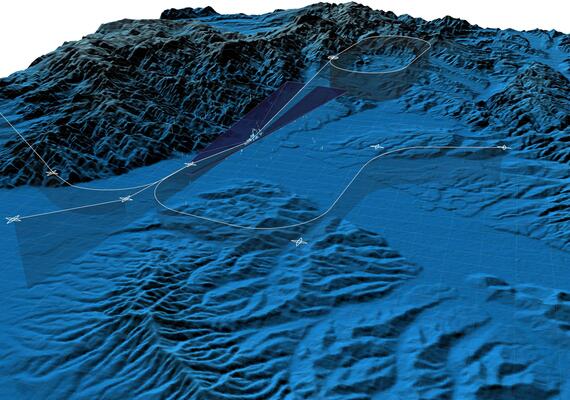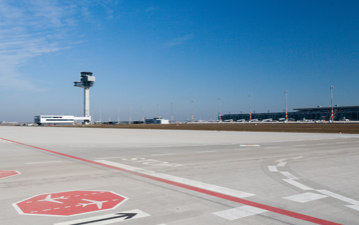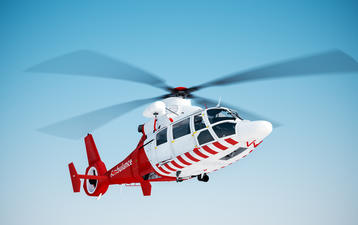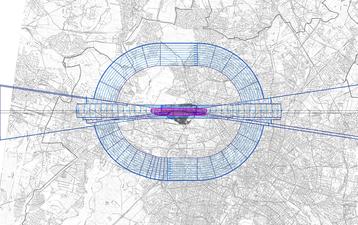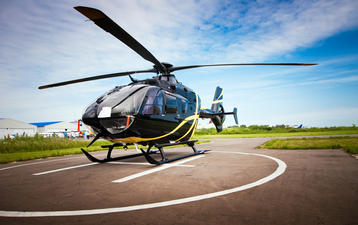Heliport Planning and Design (ICAO Annex 14, Volume II & EASA CS-HPT-DSN)
NEW - Course integrates new 5th Edition requirements of July 2020.
NEW - Course integrates new Heliport Manual: Part I, Offshore heliports of 2020 and Part II, Onshore heliports of 2021.
ICAO Annex 14, Volume II to the 1944 Chicago Convention contains the Standards and Recommended Practices (specifications) that define the physical and operational characteristics which have to be provided at heliports.
Participating in this course enables the attendants to construe and implement the Annex 14 specifications and other guidance material (ICAO Heliport Manual Doc. 9261) related to surface-level and elevated heliports, as well as helidecks and shipboard heliports.
Based on best practices, the participants will gain knowledge on how to configure, dimension and design the fundamental infrastructural elements of heliports, including elements such as Final approach and take-off area (FATO), helicopter ground taxiways and ground taxi-routes, visual aids (lights, markings and signs), obstacle restriction and removal.
Furthermore, this course focuses on the theoretical and practical background of the above mentioned requirements, and, in case of non-compliance to the requirements, on the implementation of possible mitigation measures.
This 4-day course targets aviation personnel involved in heliport planning or operations, including engineers and architect, Aviation Authorities inspectors and auditing staff in charge of monitoring the compliance of the heliports and aerodromes infrastructure with the applicable regulations.
Course Details
Location:BerlinLanguage:English
Date:01.09. - 04.09.2025
Duration:4 days
Provider:airsight GmbH
Course Fee
For courses in Berlin:
All customers will be charged 19% VAT.
The final price will be shown on your invoice.
Please note: If you want to register several particpants from your company but need a single invoice for each, please register each of them seperately.
Course Content
General fundamentals and definitions
- Status of ICAO, EASA and other international regulations for heliport planning and design
- Legal binding principles
- New requirements according to 5th Edition of Annex 14, Volume II
- New guidance material according to heliport manual, parts onshore and offshore
- Future developments (e. g. EASA-regulations)
- Overview of additional guidance material (e. g. ICAO manuals, Regulation (EC) Air Operations)
- Types of heliports (surface-level heliports, elevated heliports, helidecks and shipboard heliports)
- Heliport data
- Certification of helicopters
- Helicopter flight characteristics, aerodynamics of rotor systems
- Relevant helicopter performance parameters (performance classes 1, 2 and 3) and classification of helicopters
- Geometric dimensioning of helicopters (overall length, rotor diameter, undercarriage width/length)
- Declared distances (TODAH, RTODAH, LDAH)
Design and dimensioning of heliports
- Heliports at aerodromes
- Final approach and take-off area (FATO)
- Helicopter clearways
- Safety area
- Touchdown and lift-off area (TLOF)
- Helicopter ground taxiways and ground taxi-routes
- Helicopter air taxiways, air taxi-routes and air transit routes
- Aprons
- Visual Aids - markings and markers (e. g. FATO marking/marker, aiming point marking, TLOF marking), lights (e. g. approach lighting system, visual approach slope indicator, FATO lights, TLOF lighting system)
Obstacle restriction and removal
- Regulations regarding obstacle limitation surfaces and sectors subject to type and usage of heliport
- Control of obstacles at existing heliports
Rescue and fire fighting services
- Fire safety requirements
- Extinguishing agents
- Safety at hospital heliports
- Consideration of accident areas
Handling of non-compliances
- Mitigation measures
- Safety assessments
Assessment of aircraft noise at heliports and requirements for noise protection
Trainer
Wolfgang Jöres
On the basis of his commercial pilot license and his engineering degree, Wolfgang has been working in aviation for more than 30 years, mainly in leadership positions. After a career as an officer and helicopter pilot in the German Air Force, he took responsibility for the modification of the German Polar research aircraft and operation in the polar regions. After that he was Managing Director, Accountable Manager, and Continuing Airworthiness Manager of a specialized aircraft operation. This company executed flight inspection services for the calibration of landing and navigation facilities in Europe and the Middle East. In his diverse positions Wolfgang acquired an in-depth knowledge of operational, technical, economic, and regulatory aspects in aviation, e.g. modification of aircraft, special mission operations, and airspace infrastructure. Today he acts as an aviation consultant for special mission operators, and as an aerospace auditor.
Target Group
- Heliport or aerodrome operations managers
- Heliport or aerodrome engineers and planners
- CAA aerodrome inspectors
- Heliport auditors
- Architects and civil engineers
- Helicopter operators and managers
Course Location
Participants are responsible for making their own travel arrangements. The accommodation and travel costs are at the charge of the participants. Please note that airsight does not perform any travel and hotel bookings for the participants. Rooms can however be booked directly by the participants by contacting the hotel. We would like to point out that from January 2025 a City Tax of 7.5% will be imposed on overnight stays for business and professional purposes in Berlin.
The course fee includes the registration, training material and examination. For non-virtual courses, coffee breaks and business lunch are also included.
Organisational Details
The course hours are scheduled as follows:
first training day: 10:00 am - 5:00 pm
mid-training days: 9:00 am - 5:00 pm
last training day: 8:00 am - 4:00 pm
Coffee breaks and business lunch are included in the course fee. At the end of the course, all participants will receive an airsight certificate based on EASA training regulations, which is highly recognised throughout the aviation industry.
About airsight Training
airsight Training course quality
airsight operates an ISO 9001 certified Quality Management System and pursues the objective to provide high quality services that fully meet the clients’ needs.
Course Details
Location:BerlinLanguage:English
Date:02.12. - 05.12.2025
Duration:4 days
Provider:airsight GmbH
Course Fee
For courses in Berlin:
All customers will be charged 19% VAT.
The final price will be shown on your invoice.
Please note: If you want to register several particpants from your company but need a single invoice for each, please register each of them seperately.
Course Content
General fundamentals and definitions
- Status of ICAO, EASA and other international regulations for heliport planning and design
- Legal binding principles
- New requirements according to 5th Edition of Annex 14, Volume II
- New guidance material according to heliport manual, parts onshore and offshore
- Future developments (e. g. EASA-regulations)
- Overview of additional guidance material (e. g. ICAO manuals, Regulation (EC) Air Operations)
- Types of heliports (surface-level heliports, elevated heliports, helidecks and shipboard heliports)
- Heliport data
- Certification of helicopters
- Helicopter flight characteristics, aerodynamics of rotor systems
- Relevant helicopter performance parameters (performance classes 1, 2 and 3) and classification of helicopters
- Geometric dimensioning of helicopters (overall length, rotor diameter, undercarriage width/length)
- Declared distances (TODAH, RTODAH, LDAH)
Design and dimensioning of heliports
- Heliports at aerodromes
- Final approach and take-off area (FATO)
- Helicopter clearways
- Safety area
- Touchdown and lift-off area (TLOF)
- Helicopter ground taxiways and ground taxi-routes
- Helicopter air taxiways, air taxi-routes and air transit routes
- Aprons
- Visual Aids - markings and markers (e. g. FATO marking/marker, aiming point marking, TLOF marking), lights (e. g. approach lighting system, visual approach slope indicator, FATO lights, TLOF lighting system)
Obstacle restriction and removal
- Regulations regarding obstacle limitation surfaces and sectors subject to type and usage of heliport
- Control of obstacles at existing heliports
Rescue and fire fighting services
- Fire safety requirements
- Extinguishing agents
- Safety at hospital heliports
- Consideration of accident areas
Handling of non-compliances
- Mitigation measures
- Safety assessments
Assessment of aircraft noise at heliports and requirements for noise protection
Trainer
Wolfgang Jöres
On the basis of his commercial pilot license and his engineering degree, Wolfgang has been working in aviation for more than 30 years, mainly in leadership positions. After a career as an officer and helicopter pilot in the German Air Force, he took responsibility for the modification of the German Polar research aircraft and operation in the polar regions. After that he was Managing Director, Accountable Manager, and Continuing Airworthiness Manager of a specialized aircraft operation. This company executed flight inspection services for the calibration of landing and navigation facilities in Europe and the Middle East. In his diverse positions Wolfgang acquired an in-depth knowledge of operational, technical, economic, and regulatory aspects in aviation, e.g. modification of aircraft, special mission operations, and airspace infrastructure. Today he acts as an aviation consultant for special mission operators, and as an aerospace auditor.
Target Group
- Heliport or aerodrome operations managers
- Heliport or aerodrome engineers and planners
- CAA aerodrome inspectors
- Heliport auditors
- Architects and civil engineers
- Helicopter operators and managers
Course Location
Participants are responsible for making their own travel arrangements. The accommodation and travel costs are at the charge of the participants. Please note that airsight does not perform any travel and hotel bookings for the participants. Rooms can however be booked directly by the participants by contacting the hotel. We would like to point out that from January 2025 a City Tax of 7.5% will be imposed on overnight stays for business and professional purposes in Berlin.
The course fee includes the registration, training material and examination. For non-virtual courses, coffee breaks and business lunch are also included.
Organisational Details
The course hours are scheduled as follows:
first training day: 10:00 am - 5:00 pm
mid-training days: 9:00 am - 5:00 pm
last training day: 8:00 am - 4:00 pm
Coffee breaks and business lunch are included in the course fee. At the end of the course, all participants will receive an airsight certificate based on EASA training regulations, which is highly recognised throughout the aviation industry.
About airsight Training
airsight Training course quality
airsight operates an ISO 9001 certified Quality Management System and pursues the objective to provide high quality services that fully meet the clients’ needs.
Course Details
Location:In-houseLanguage:German / English
Duration:4 days
Provider:airsight GmbH
Course Content
General fundamentals and definitions
- Status of ICAO, EASA and other international regulations for heliport planning and design
- Legal binding principles
- New requirements according to 5th Edition of Annex 14, Volume II
- New guidance material according to heliport manual, parts onshore and offshore
- Future developments (e. g. EASA-regulations)
- Overview of additional guidance material (e. g. ICAO manuals, Regulation (EC) Air Operations)
- Types of heliports (surface-level heliports, elevated heliports, helidecks and shipboard heliports)
- Heliport data
- Certification of helicopters
- Helicopter flight characteristics, aerodynamics of rotor systems
- Relevant helicopter performance parameters (performance classes 1, 2 and 3) and classification of helicopters
- Geometric dimensioning of helicopters (overall length, rotor diameter, undercarriage width/length)
- Declared distances (TODAH, RTODAH, LDAH)
Design and dimensioning of heliports
- Heliports at aerodromes
- Final approach and take-off area (FATO)
- Helicopter clearways
- Safety area
- Touchdown and lift-off area (TLOF)
- Helicopter ground taxiways and ground taxi-routes
- Helicopter air taxiways, air taxi-routes and air transit routes
- Aprons
- Visual Aids - markings and markers (e. g. FATO marking/marker, aiming point marking, TLOF marking), lights (e. g. approach lighting system, visual approach slope indicator, FATO lights, TLOF lighting system)
Obstacle restriction and removal
- Regulations regarding obstacle limitation surfaces and sectors subject to type and usage of heliport
- Control of obstacles at existing heliports
Rescue and fire fighting services
- Fire safety requirements
- Extinguishing agents
- Safety at hospital heliports
- Consideration of accident areas
Handling of non-compliances
- Mitigation measures
- Safety assessments
Assessment of aircraft noise at heliports and requirements for noise protection
Trainer
Wolfgang Jöres
On the basis of his commercial pilot license and his engineering degree, Wolfgang has been working in aviation for more than 30 years, mainly in leadership positions. After a career as an officer and helicopter pilot in the German Air Force, he took responsibility for the modification of the German Polar research aircraft and operation in the polar regions. After that he was Managing Director, Accountable Manager, and Continuing Airworthiness Manager of a specialized aircraft operation. This company executed flight inspection services for the calibration of landing and navigation facilities in Europe and the Middle East. In his diverse positions Wolfgang acquired an in-depth knowledge of operational, technical, economic, and regulatory aspects in aviation, e.g. modification of aircraft, special mission operations, and airspace infrastructure. Today he acts as an aviation consultant for special mission operators, and as an aerospace auditor.
Target Group
- Heliport or aerodrome operations managers
- Heliport or aerodrome engineers and planners
- CAA aerodrome inspectors
- Heliport auditors
- Architects and civil engineers
- Helicopter operators and managers
Organisational Details
airsight offers this training course on request, worldwide. At the end of the course, all participants will receive an airsight certificate based on EASA training regulations, which is highly recognised throughout the aviation industry.
About airsight Training
airsight Training course quality
airsight operates an ISO 9001 certified Quality Management System and pursues the objective to provide high quality services that fully meet the clients’ needs.

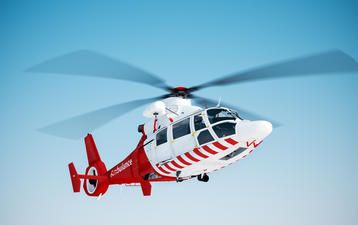
 Training 5 or more people? Ask for an In-house course at your premises or online!
Training 5 or more people? Ask for an In-house course at your premises or online!

